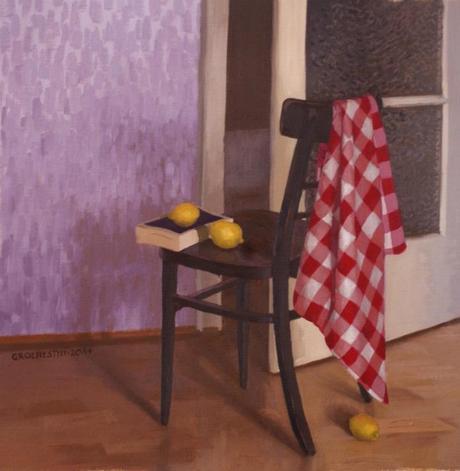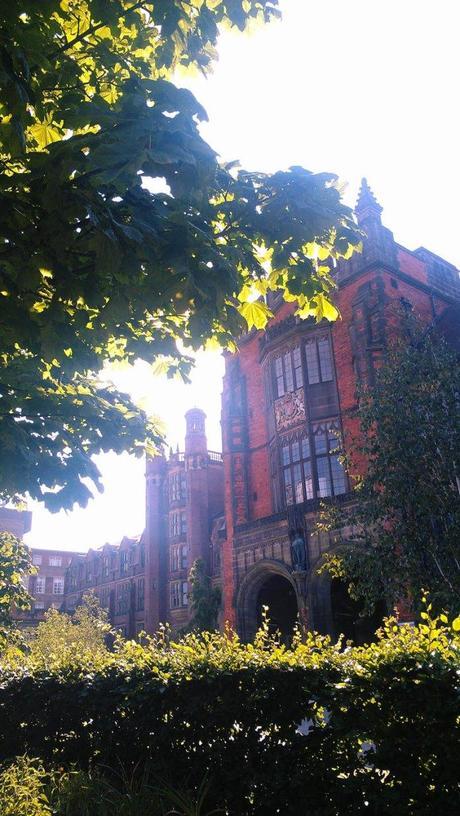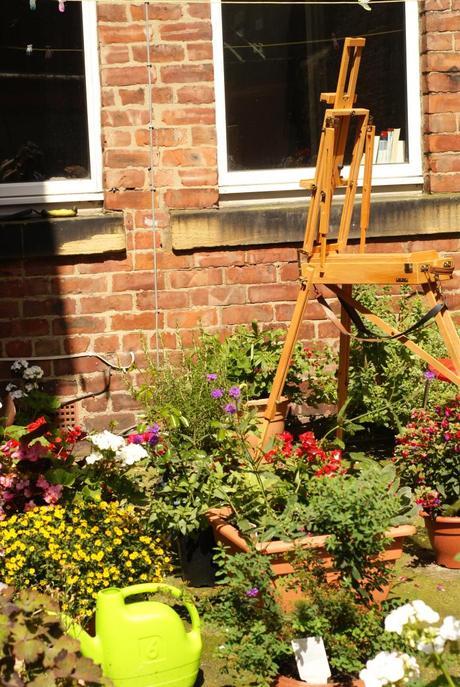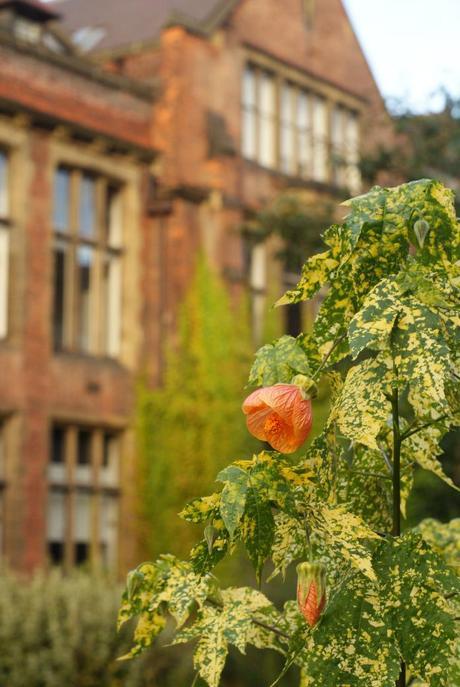
Picnic for one © Samantha Groenestyn (oil on linen)
The world of art is more than a little unnerving. Something like a manifestation of Alice’s fantasy world, in which ‘everything would be nonsense. Nothing would be what it is because everything would be what it isn’t. And contrary-wise; what it is, it wouldn’t be, and what it wouldn’t be, it would. You see?’ The Wonderland in which ‘art is anything that you can get away with’ leaves me, at least, whimpering with Alice, ‘it would be so nice if something would make sense for a change.’
Many of my peers are quantum physicists, and it is among such erudite and clear-thinking company that I find myself most at ease and most understood. Science, after centuries of academic rigour, is systematic in its innovation. It builds upon previous knowledge, lets go of what proves false, and only accepts work of a high standard that respects the tradition. I’m thoroughly convinced that artists should look to our scientist friends for methodological guidance as an antidote to our proudly irrational domain. Such an idea is supported by Galenson in his excellent book Old masters and young geniuses, in which he draws attention to certain parallels between the career of the artist and that of the scholar.

Newcastle University
The shape of the artistic career and that of the scientific career have much in common. Galenson, an economist by training, has taken time to observe the lifecycles of successful artists over the last century and has turned up the following unsurprising but little-discussed commonalities. ‘At the graduate level, most important scholars have worked with a teacher who is himself an important contributor to the discipline. The same is true for artists’ (2006: 18). He continues, ‘Similarly, just as at an early stage of their careers most successful scholars have studied and worked closely with other promising scholars of their own generation, virtually all successful modern artists have initially developed their art in the company of other talented young artists.’
It sounds simple, but it is an observation worth taking note of. Where our scientist peers are working together in small clusters of post-doctoral researchers and PhD candidates, under the guidance of an established and tenured professor and with the resources to make global collaborations and attend international conferences, artists are ejected from scholarly life and instead set up shop alone in a private studio. Perhaps the opportunity to take up a shared studio space encourages nurturing interactions, but the painfully obvious scarcity of resources remains as artists must compete against each other for piecemeal funding in the form of prizes while paying for their own workspace and tools. Nevertheless, knowing that keeping good company is a significant factor in a successful career, the solitary artist might seek the company of other similarly attuned minds of other disciplines. Just as Goethe ‘associated by preference with medical men and attended medical lectures’ (Kollwitz, p. 80), we might find stimulating peers amongst our more structurally grounded scientific contemporaries.

New garden studio in Newcastle upon Tyne
Such science-art intermingling may turn up more fundamental similarities. Our diverging methods have a common cause: the impulse to grapple with the physical world and to understand it by imposing order. The artist imposes a visual order on the world; the scientist a more abstract and calculable one. Without suggesting that art is a science, for I do not believe it to be, I want to make a case for art being another form of scholarship. Historically, our work shares many common traits, as George Kubler observed in his book The shape of time (1962; in Galenson, 2006: 17)—not least the pattern of ‘invention, change and obsolescence.’ Science and art are at their cores innovative careers, not merely geared towards presenting polished, new solutions to the world at large, but more fundamentally through identifying and posing relevant problems. The physical world is full of mystery, and we multiply our understanding and reverence of it through finding better ways to humbly question it.
So argues Galenson (p. 17), and, further, he argues that our innovative goals are not market driven but aim instead at ‘creat[ing] new methods and results that change the work of other practitioners’ (my emphasis). ‘We understand,’ he writes (p. 18) ‘that in the first instance nearly all important scholarship is produced for an audience of other scholars.’ No quantum physicist works for the ludicrous goal of pleasing the curious but scientifically-challenged public, commodifying the results of their investigations for general consumption. He does not bend to the arbitrary tastes of a cashed-up audience. And this is no high-minded snobbery or elitism. Scientists are simply highly-trained specialists, and, for the most part, regarded as such. We non-scientists accept broader, simpler explanations from them, and rely on their expert judgements within their field.

The artist might follow this cue and recognize that the most significant art will not be market-driven, gallery-selected, or critically-determined work, for the real experts in this field are none other than our colleagues–other artists. We might accept commissions that pay our bills, or take part in shows that ostensibly raise our credibility, or even intentionally make art that is ‘for the people,’ with accessibility as our main motivator. But I would contend that in so doing, we hazard limiting our artistic potential. Chamfort (in de Botton 2004: 125) acidly observes, ‘Public opinion is the worst of all opinions. … One can be certain that every generally held idea, every received notion will be an idiocy, because it has been able to appeal to a majority.’ Were we to consider ourselves true scholars, we might let these distractions fall away and focus on the more pressing task of contributing something of lasting import to the body of human knowledge. Rather than setting ourselves up as obscurantist elitists, we might simply recognize that we, too, are specialists of a practical variety. Further, we have a duty to the public to be discerning about the quality of art, since those not so well-versed in visual languages are looking to us for guidance.
Art has many purposes—as Gombrich (1972 [1950]: 13) describes, ‘Most of the paintings and statues which are now strung up along the walls of our museums and galleries were not meant to be displayed as Art. They were made for a definite occasion and a definite purpose which were in the artist’s mind when he set to work.’ But while art may be used spiritually, decoratively, financially and communicatively, it is an appealing idea that in the modern scholarly realm art may also be produced as a visual form of research. Robert Nelson (2009: 121) discusses the extent to which art may be considered research ‘because it is concerned with innovation.’ Perhaps our most honest inquisitive efforts will attract fame and fortune, but more soberly, perhaps they will bring order to the chaos, with art functioning as another branch of respectable scholarly investigation.
De Botton, Alain. 2004. Status anxiety. Hamish Hamilton: London.
Galenson, David W. 2006. Old masters and young geniuses: The two life cycles of artistic creativity. Princeton University: Princeton, NJ.
Gombrich, E. H. 1972 [1950]. The story of art. Twelfth ed. Phaidon: Oxford.
Kollwitz, Käthe. 1988. The diary and letters of Käthe Kollwitz. Northwestern University Press.
Nelson, Robert. 2009. The jealousy of ideas: Research methods in the creative arts. Ellikon: Fitzroy, Victoria.

